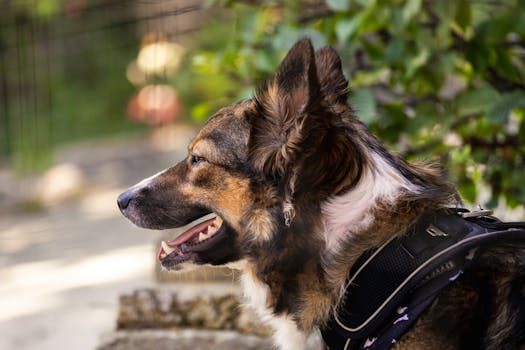Traveling with special needs pets, such as a disabled dog, requires additional planning and consideration to ensure their safety and comfort. In this article, we’ll explore practical advice for pet owners who wish to embark on journeys with their beloved animals that have unique needs.
How to Prepare for Traveling with Special Needs Pets
Preparing for a trip with a special needs pet involves careful organization and attention to detail. First, consult with your veterinarian to discuss your pet’s specific requirements and fitness for travel. Acquiring a pet passport or health certificate may also be necessary, especially for international travel with special needs pets.
Gather and pack all essential medications, and ensure they’re easily accessible during the trip. It’s also important to carry familiar items, like a favored toy or blanket, to provide comfort to your pet in unfamiliar environments. Start the process of acclimatization early, allowing your pet to get used to travel carriers or crates.
Remember to maintain your pet’s routine as much as possible to avoid additional stress, and plan for regular stops during car journeys. Lastly, ensure your travel itinerary accommodates your pet’s needs, allowing for flexibility in case of unexpected events.

What Are the Essential Items for Traveling with a Disabled Dog?
- Medication and health supplements
- Comfort items such as blankets and toys
- Food and water dishes, plus a supply of their usual food
- An IATA-compliant crate for air travel
- A sturdy harness or mobility aids
- First-aid kit tailored to your pet’s needs
These essentials will ensure that your disabled dog has everything they need to stay healthy and comfortable during your travels.
How to Choose Pet-Friendly Accommodations for Special Needs Pets?
When selecting accommodations, it’s crucial to find places that cater to disabled pets. Research and reach out to hotels in advance to confirm their pet policies and the facilities they offer. Ensure that the accommodation has easy access and is free of potential hazards for your pet.
Consider choosing a ground floor room to avoid stairs, and ask about the availability of grassy areas for bathroom breaks. Look for pet-friendly accommodations that provide additional support, such as pet-sitting services, in case you need to leave your pet for a short period.

What Are the Best Practices for Car Travel with Disabled Pets?
Ensure your pet’s mobility aid fits comfortably inside the vehicle. Use a secure, soft-lined crate or harness to keep them safe. Schedule frequent stops for bathroom breaks and to allow your pet to stretch and move around to prevent pressure sores.
Keep the car well-ventilated and at a comfortable temperature, and never leave your pet alone in the car, especially on hot or cold days. Keeping calming music playing or a window slightly open can also help reduce anxiety during the journey.
How to Ensure a Smooth Air Travel Experience for Your Special Needs Pet?
Familiarize yourself with airline policies for traveling with pets. Book direct flights to minimize travel time and avoid the stress of transfers. Ensure your pet’s crate is spacious enough for them to stand and turn around comfortably, and label it with your contact information and a live animal sticker.

Feed your pet a light meal a few hours before the flight and provide a piece of clothing with your scent in their crate for reassurance. Consult your vet about hydration and feeding schedules during the flight, especially for pets with specific dietary needs.
What Are the Common Challenges When Traveling with a Disabled Dog?
Traveling with a disabled dog presents unique challenges, such as ensuring accessibility and managing their comfort. Be prepared for possible emergencies and have a list of veterinarians along your route. Acknowledge the possibility of your pet’s anxiety and plan ways to soothe them, such as with familiar scents or gentle reassurance.
It’s also important to consider the physical barriers your pet may encounter, such as stairs or uneven surfaces, and prepare to assist them or find alternative routes.

How to Keep Your Special Needs Pet Comfortable During Travel?
Comfort is paramount when traveling with special needs pets. Keep their bedding soft and supportive to prevent sores, and maintain a temperature-controlled environment. If your pet is anxious, consider natural calming aids or consult your vet for anti-anxiety medication.
Lastly, give your pet plenty of attention and affection to reassure them that they are safe and loved, even in a new environment.
In conclusion, traveling with a special needs pet requires thorough preparation, but with the right approach, it can be an enriching experience for both the pet and the owner. By planning ahead, seeking pet-friendly accommodations, ensuring comfort during travel, and being prepared for challenges, you can create a memorable journey for you and your special companion.
